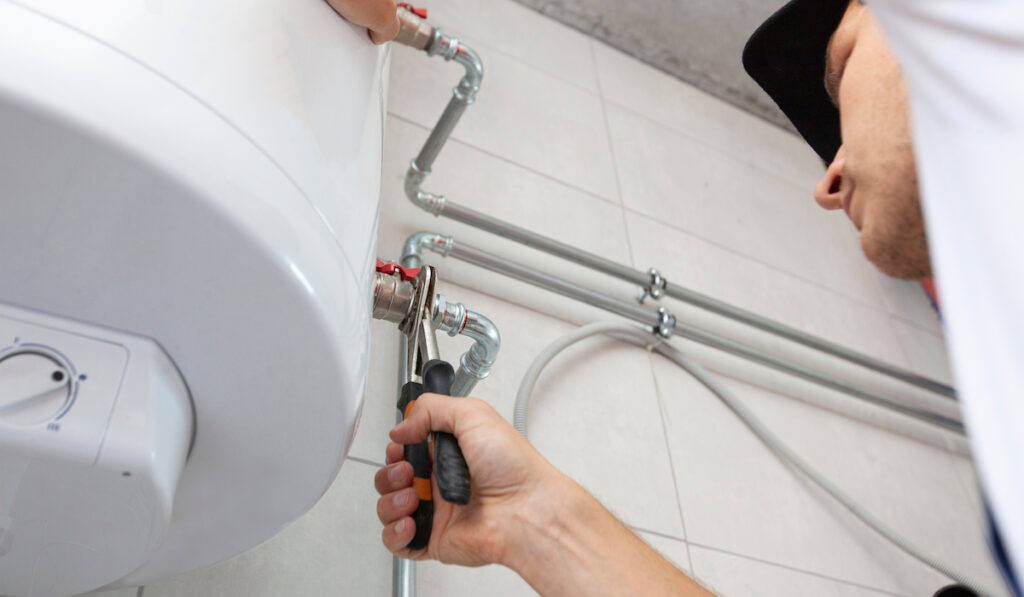Professional Tips on Maintaining Your Home's Hot Water System
Professional Tips on Maintaining Your Home's Hot Water System
Blog Article
Just how do you really feel in regards to Tips For Maintaining Your Hot Water Heater?

Warm water is necessary for daily convenience, whether it's for a rejuvenating shower or cleaning dishes. To ensure your warm water system runs effectively and lasts longer, regular maintenance is key. This short article provides useful pointers and understandings on how to preserve your home's warm water system to prevent disturbances and costly fixings.
Introduction
Keeping your home's hot water system might seem difficult, yet with a couple of straightforward steps, you can ensure it operates efficiently for many years to come. This guide covers everything from comprehending your warm water system to DIY maintenance tips and understanding when to contact expert help.
Significance of Keeping Your Hot Water System
Routine upkeep not just extends the lifespan of your hot water system however additionally guarantees it runs successfully. Ignoring upkeep can bring about decreased efficiency, higher energy bills, and even premature failure of the system.
Indications Your Warm Water System Requirements Upkeep
Understanding when your warm water system needs focus can protect against significant concerns. Keep an eye out for indicators such as irregular water temperature level, weird noises from the heater, or rusty water.
Flushing the Hot Water Heater
Purging your hot water heater gets rid of debris build-up, boosting effectiveness and extending its life.
Checking and Replacing Anode Rods
Anode rods prevent deterioration inside the tank. Inspecting and changing them when broken is vital.
Complicated Problems Requiring Professional Help
Examples consist of significant leaks, electrical troubles, or if your hot water heater is regularly underperforming.
Routine Professional Upkeep Conveniences
Expert maintenance can consist of detailed examinations, tune-ups, and making certain conformity with safety standards.
Inspecting and Readjusting Temperature Level Settings
Adjusting the temperature level setups makes sure ideal efficiency and safety.
Do It Yourself Tips for Upkeep
You can do several upkeep tasks yourself to maintain your hot water system in top condition.
Looking for Leaks
Regularly evaluate pipes and links for leaks, as these can result in water damages and higher costs.
Comprehending Your Warm Water System
Before diving right into maintenance tasks, it's useful to recognize the fundamental components of your hot water system. Typically, this consists of the water heater itself, pipelines, anode rods, and temperature level controls.
Monthly Upkeep Tasks
Regular regular monthly checks can help catch small problems prior to they intensify.
Examining Pressure Alleviation Valves
Testing the pressure safety valve ensures it operates correctly and stops too much pressure accumulation.
Shielding Pipes
Shielding hot water pipes lowers heat loss and can save power.
When to Call a Professional
While DIY upkeep is advantageous, some problems call for professional know-how.
Conclusion
Routine upkeep of your home's hot water system is vital for performance, longevity, and cost savings. By complying with these pointers and knowing when to look for specialist aid, you can ensure a reputable supply of warm water without unanticipated disruptions.
How to Maintain an Instant Hot Water Heater
Before tinkering with your hot water heater, make sure that it’s not powered on. You also have to turn off the main circuit breaker and shut off the main gas line to prevent accidents. Also turn off the water valves connected to your unit to prevent water from flowing into and out of the appliance. 2. When you’re done, you have to detach the purge valves’ caps. These look like the letter “T†and are situated on either side of the water valves. Doing so will release any pressure that has accumulated inside the valves while at the same time avoid hot water from shooting out and burning your skin. 3. When the purge valves’ caps are removed, you have to connect your hosing lines to the valves. Your unit should have come with three hoses but if it didn’t, you can purchase these things from any hardware or home repair shops. You can also get them from retail stores that sell water heating systems. Read the user’s manual and follow it to complete this task properly. When the hosing lines are connected, open the purge port’s valves. 4. You should never use harsh chemical cleaners or solutions when cleaning your unit. Make use of white vinegar instead. It should be undiluted and you’ll probably use about 2 gallons. 5. Now flush your water heater. This task should probably take about 40 minutes. We can’t give you specific directions for this because the procedure is carried out depending on the type, model and brand of your heater. With that being said, refer to the user’s manual. 6. When you’re done draining the unit, you have to turn off the purge port valves again. Remove the hosing lines that you earlier installed on each of the water valves. Put the valve caps (purge port) back in their respective places and be very careful so as not to damage the rubber discs that are found inside these caps. 7. Now that everything’s back in place, check your user’s manual again to find out how to reactivate your water heating system. 8. Once it is working, turn one of your hot water faucets on just to let air pass through the heater’s water supply pipes. Leave the tap on until water flows smoothly out of it. https://www.orrplumbing.com/blog/2014/september/how-to-maintain-an-instant-hot-water-heater/

As an enthusiastic person who reads on How to Maintain a Hot Water Heater in a Few Simple Steps, I imagined sharing that piece of content was mandatory. Feel free to set aside a second to share this entry if you liked it. We take joy in your readership.
Apply Now Report this page